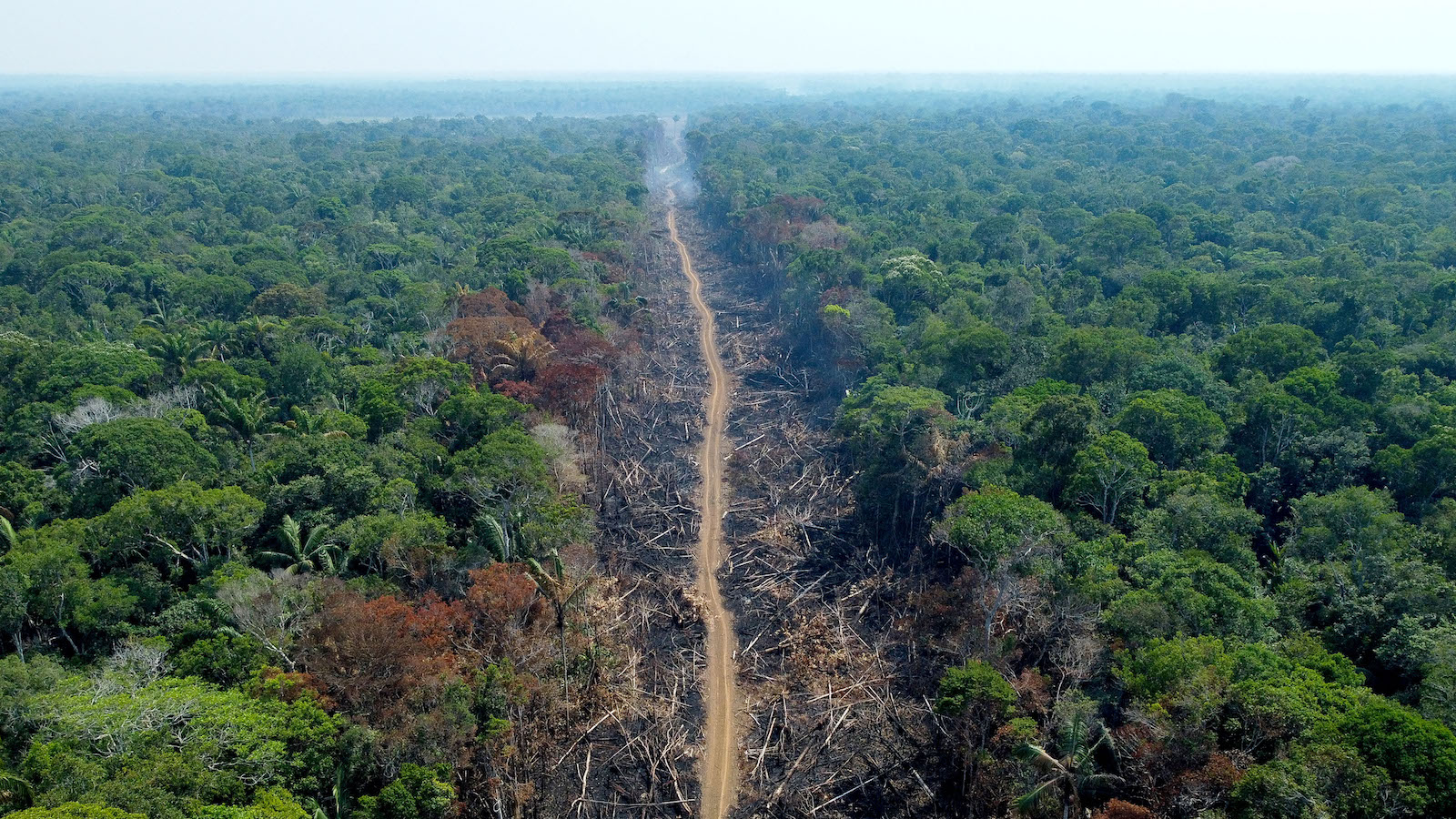Governments around the world are increasingly recognizing the importance of tropical forests: They harbor biodiversity, support Indigenous livelihoods, and regulate the climate.
But deforestation remains a huge problem.
According to a new analysis from the nonprofit World Resources Institute and the University of Maryland, the world lost more than 10 million acres of primary tropical forests in 2022, an area the size of Switzerland and a 10 percent increase from 2021 losses. Primary tropical forests are defined as areas of “mature, natural, humid, tropical forest cover that has not been completely cleared and regrown in recent history.”
The findings represent the first full year of data since 145 countries signed the Glasgow Leaders’ Declaration on Forests and Land Use, in which they committed to halting and reversing forest loss by the end of this decade. The commitment, which came out of the 2021 United Nations climate conference, was hailed as a recognition of the critical role forests play in regulating the global climate. Without healthy forests, there is no viable pathway to limiting global warming to 1.5 degrees Celsius (2.7 degrees Fahrenheit).
But the data shows that countries have yet to make good on that pledge. “Globally, we are far off track and trending in the wrong direction,” Rod Taylor, global director of the World Resources Institute’s forest program, told reporters at a press conference last week. Another expert at the conference described an ongoing “hemorrhaging” of the world’s most important forest ecosystems.
As in previous years, the largest tropical forest losses occurred in Brazil and Congo. Brazil alone contributed 43 percent of the world’s tropical forest loss — 4.4 million acres — in 2022. Non-fire-related forest loss in the country jumped to a 17-year high, largely thanks to increased land clearing for cattle farming and mining, and other incursions into Indigenous territories. Forest loss in Congo ticked up only slightly in 2022 but remained high at 1.3 million acres, largely due to land clearing near small-scale agricultural sites.
Other countries hit new and concerning highs for forest loss. Bolivia — one of the few countries that didn’t sign the Glasgow forests pledge — set a new record for primary tropical forest loss in 2022, coming in third place globally with a net loss of 1 million acres. Ghana lost less — 44,000 acres — but this number represents a greater fraction of its tropical forest than any other country and is a 70 percent increase from its 2021 losses.
On a bright note, the analysis showed low or reduced tropical forest loss in several countries, including Indonesia, Malaysia, Gabon, and Ivory Coast. The researchers chalk this up to a combination of policy actions and voluntary commitments from the private sector. In Indonesia, the federal government has invested in peatland restoration and mangrove rehabilitation, and municipalities have made strides in fire suppression. In Malaysia, sustainable palm oil pledges from big businesses plus a government moratorium on new palm plantations have contributed to historically low rates of forest loss since 2020.
Taking into account not only tropical forests but also northern coniferous forests and secondary forests — areas that have regrown after deforestation — global total tree cover loss actually decreased by 10 percent in 2022. But this is largely due to a decrease in wildfires and not “an indication of any positive trend,” according to the researchers. After an abnormally active fire year in 2021 — in which wildfires burned more than 13 million acres of tree cover in Russia alone — global fire activity quieted to below-average levels in 2022.
Thankfully, there are some signs that progress may be on the horizon: At a conference in Montreal last year, some 190 countries agreed to protect 30 percent of the planet’s land area, much of it covered by trees. In Brazil, the recently elected President Luiz Inácio Lula da Silva has pledged to reverse deforestation throughout the Amazon, and new, climate-focused leadership at the World Bank could prioritize forest health as part of countries’ national development plans.
But Liz Goldman, senior geographic information systems research manager for the World Resources Institute’s Global Forest Watch initiative, said more urgent action is needed virtually everywhere. For instance, governments could offer financial incentives to organizations that prevent deforestation, or increase Indigenous control over forests — research has shown that the world’s healthiest forests are on Indigenous land.
In general, Goldman recommended actions that are “tailored to the landscape” in question. Increased law enforcement has driven down deforestation in Southeast Asia, she said, but this might not be as helpful in places like Congo, where economic development is desperately needed to provide alternative income sources to small-scale farmers, many of whom face limited economic options other than expanding their farms onto nearby tropical forests.
“There’s just a real need for investment to lift people out of poverty if we’re going to see the declines that we need to see” in deforestation, she said.



